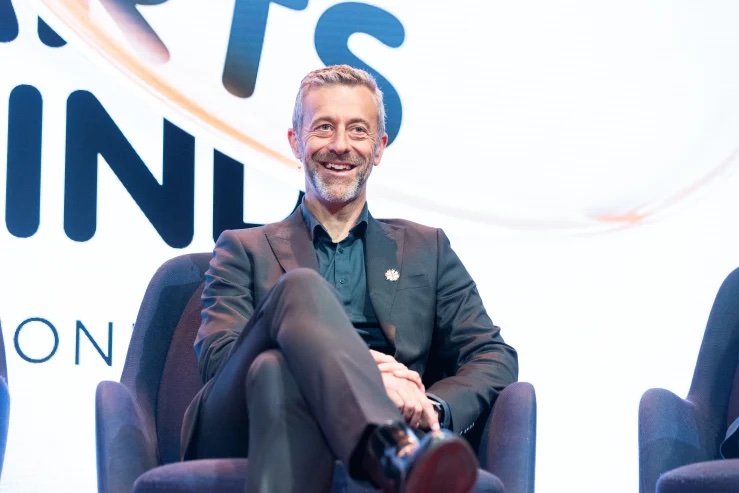The Future Fund has started preparing its $205 billion portfolio for a financial environment with higher inflation and warned other investors will need to follow its lead.
Speaking at the Sohn Hearts & Minds conference on Friday, the Future Fund’s chief investment officer Ben Samild said it had traded around $65 billion worth of its portfolio for assets with better protection against what is expected to be a long-term inflationary environment.
 Future Fund’s Ben Samild is wary of an inflation future with higher inflation than what many are expecting. Photo: Renee Nowytarger
Future Fund’s Ben Samild is wary of an inflation future with higher inflation than what many are expecting. Photo: Renee Nowytarger
“We thought we needed to start building a portfolio that was more resilient to that world. So that means we’ve done about $65 billion of investing in things that we thought were less inflation resilient to things that are more inflation resilient,” he said.
Both Samild, and Bridgewater Associates’ investment veteran Atul Lele, warned that it is a very different environment compared to the recent decades of disinflation and low-interest rates, which favoured equities.
“Over the last 40 years, you’ve seen a pro corporate, pro liquidity, pro growth, disinflationary environment that’s been hugely favourable to growth-sensitive assets, to equity-centric type portfolios,” Lele said.
“And when we play the tape forward and think about, ‘okay, what’s actually going to happen from here?’ All of those dynamics are shifting … and that’s the big risk that we see out there.”
One of his big warnings has been the risk of a spike in US bond yields if their government has trouble finding buyers of its debt as the US budget deficit soars.
The US Federal Reserve and US commercial banks have been big buyers of US debt over the past few years, but they are both stepping out of the market.
“That’s why we say the big problem is that you’ve got all of this (debt) issuance coming, and you don’t have a natural buyer there, at least not at the current level of yields,” Lele said.
“It becomes an issue when investors are going to be demanding higher and higher yields to go and actually, to go and actually fund that US deficit.”
For the Future Fund this could be advantageous if it is able to get a strong yield from something as relatively safe as US government bonds. And even higher yields from quality private debt.
“If I had to pick one thing tomorrow (to invest in) it would be reasonably safe, asset-backed or even investment-grade lending where I can get low double-digit returns at very, very little risk,” Samild said.
It also means investors should be aware of the benefits of staying with the high cash yields, said Lele.
“When we think about what’s available for investors - in just staying out of assets and staying in cash - it looks pretty attractive today in cash. I don’t think investors right now are being sufficiently incentivised to move away from it.”
Even now, Australian investors can get an interest rate over 5 per cent from savings accounts which are effectively risk-free due to the government guarantee of deposits.
Markets this week enthusiastically welcomed news that US inflation was softer than expected last month, which fuelled bets the US Federal Reserve may be done with interest rate hikes.
This article was originally posted by The Sydney Morning Herald here.
Licensed by Copyright Agency. You must not copy this work without permission.